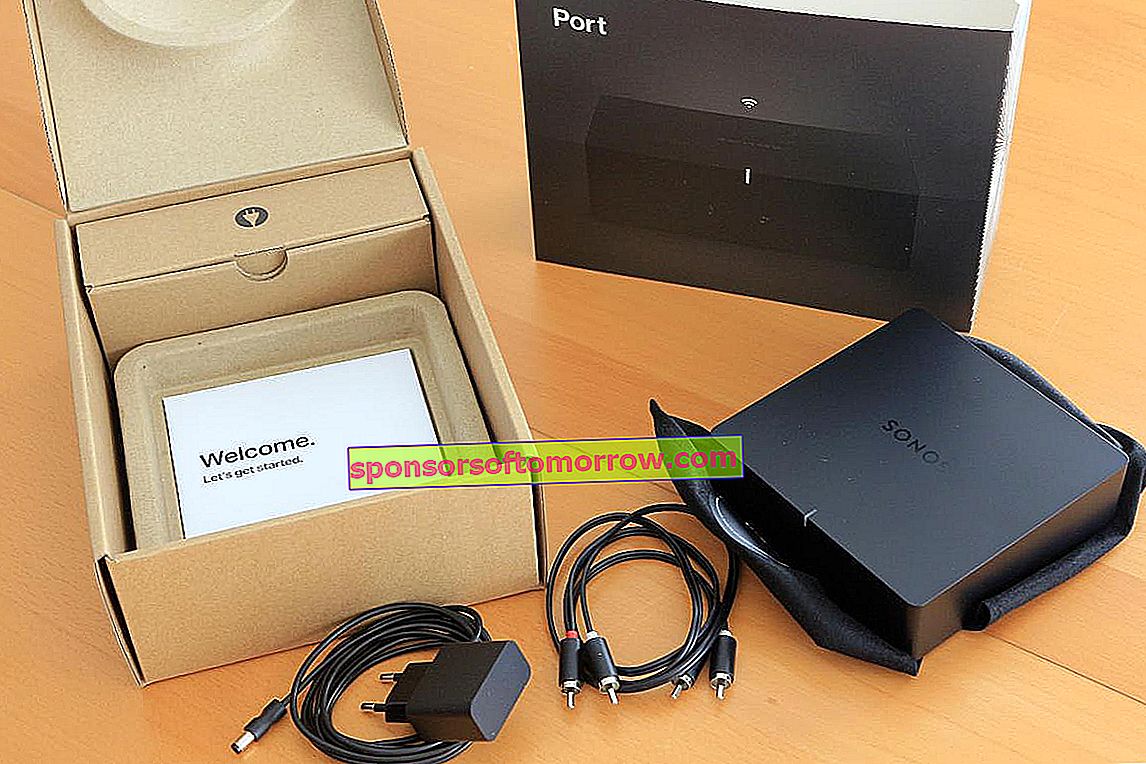
Sonos continues to expand and update its product range. Expanding because they have recently presented some news and "updated" because some products are updates to something they already had or had. This is the case with the Sonos Port that we are now testing, which replaces the old Sonos Connect. It is like that a music source to add network playback to any sound system. By function and form it looks like the Sonos Amp that we already tested but in this case it needs an external amplifier and its price remains at 450 euros (the Amp goes up to 700 euros).
In front of the Sonos Amp
Just like when we tested the Sonos Amp we checked its background, so did the Port . As we have pointed out, the Sonos Connect was for a long time the alternative for those who had a stereo and wanted to add Sonos. That is, add the ability to play music files, connect to internet radios, or to current online music services, as well as being included in a multi-room system. The new Port features a simpler and more discreet design than the old Connect, with a lower profile and in line with the Amp. In the change we must admit that we have lost a couple of things: the optical digital output (now only coaxial) and the front buttons. With them you could raise or lower the volume, and pause the music, without resorting to anything else. The Port does not have any control , not even the (perfect) touchs of the Amp: you have to have mobile phone and application at hand.
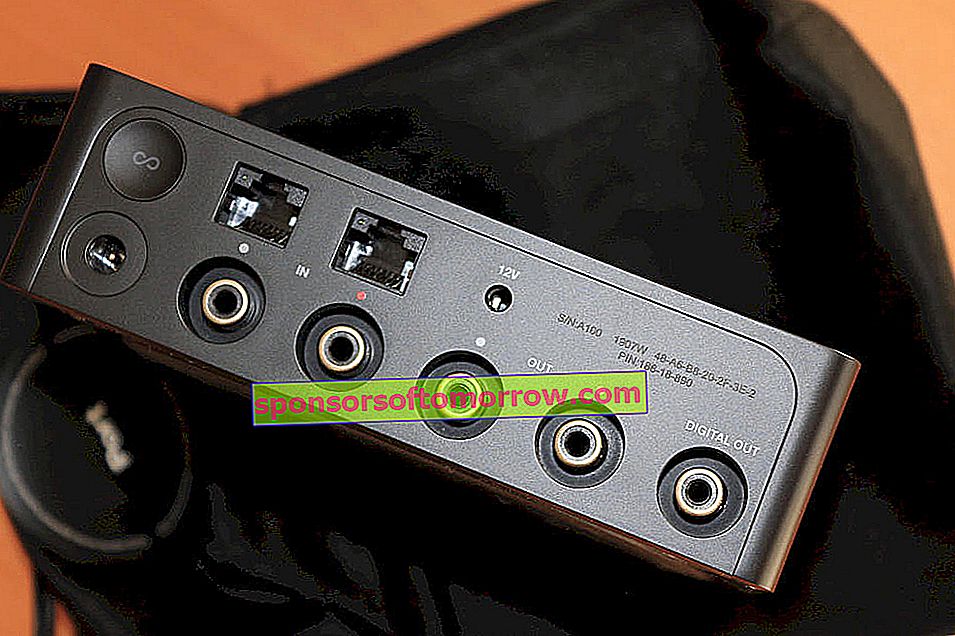
Sonos Port rear connections
When analyzing the Amp we saw that Sonos had added some featurescompared to the old Connect: Amp. More power, a more compact size, and better dissipation (heats up less), even the option to use multiple in a home theater system. And the aforementioned touch controls. None of this happens in the Port: the cinema part would not make much sense but we do miss the controls. Also, that the Port could reproduce high resolution sound files. Perhaps a future update will allow it ... We suspect that this may be the case and the hardware has been prepared for it as it uses a more modern DAC chip. This already offers better sound now, but opens the door for an update to allow greater performance. Right now if we send it something above 16bit / 44 kHz it reduces it to that format, either a shared own file or via Tidal (MQA).
What does the Port allow?
The Sonos Port is intended for fans who already have a stereo . That is to say: you have your speakers, your amplifier, perhaps your turntable ... And you want to discover this about "dematerialized" music, that is, listening to music without having to play a vinyl or CD. In fact, the Port opens the doors to a new dimension… There are thousands of radios on the internet, many specialized in types of music for any taste. Then we have services like Spotify or Tidal (among others) where we look for what we want to hear.
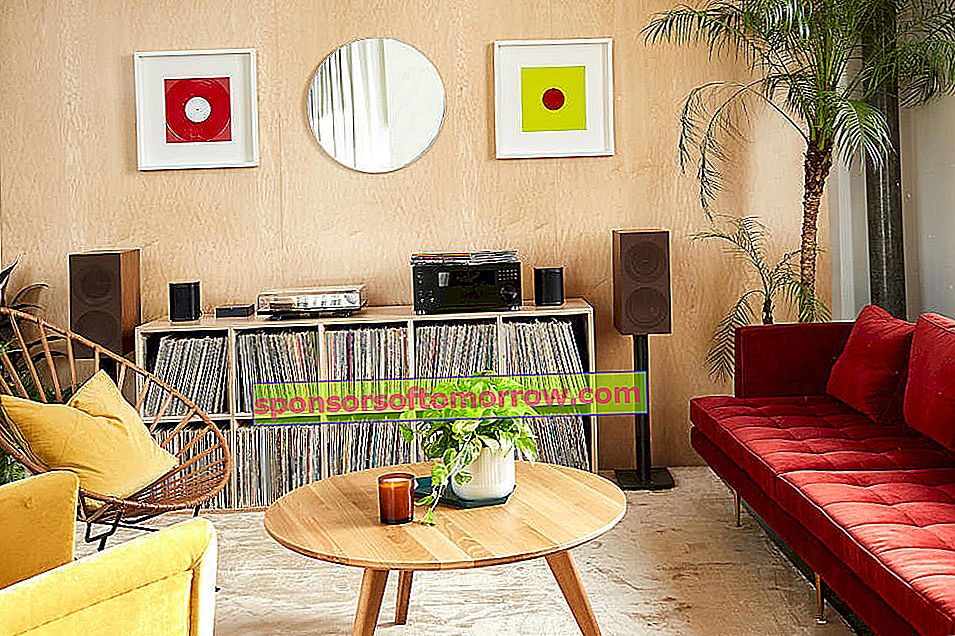
Sonos Port in a traditional stereo system
If we also have other speakers or Sonos products, or more than one device and a Port in each one: multi-room. It is compatible with AirPlay2 , that is, we can send you music from any iOS device, different to each room if we want. As it has a standard RCA input, if we connect it there to the amplifier's output (Tape REC) we can share the music from the equipment. For example: we put a vinyl on the main equipment, and the signal reaches the Port through that entrance. We can listen to that record in the rest of the house taking advantage of the Sonos connectivity. Surely that's where its name comes from: it is a "port", to access digital music on an old computer, and vice versa.
How is the Sonos Port
It is a compact box measuring just 14 centimeters on a side by 4 centimeters high, and weighing 472 grams. It is only available (at the moment) in matt black, like the Amp, and it only has a white LED that indicates when it is running. In case of failure or when installed, it lights up orange or green, depending on the phase it is in.
On the back you have all the connections: the analog RCA outputs for the amplifier and a digital one (only coaxial RCA). We will use this if our amplifier has digital inputs (such as AV cinema). It will also serve for an external DAC converter that can improve the quality of the internal port. Then you have the pair of RCA inputs to share music (from a turntable for example).
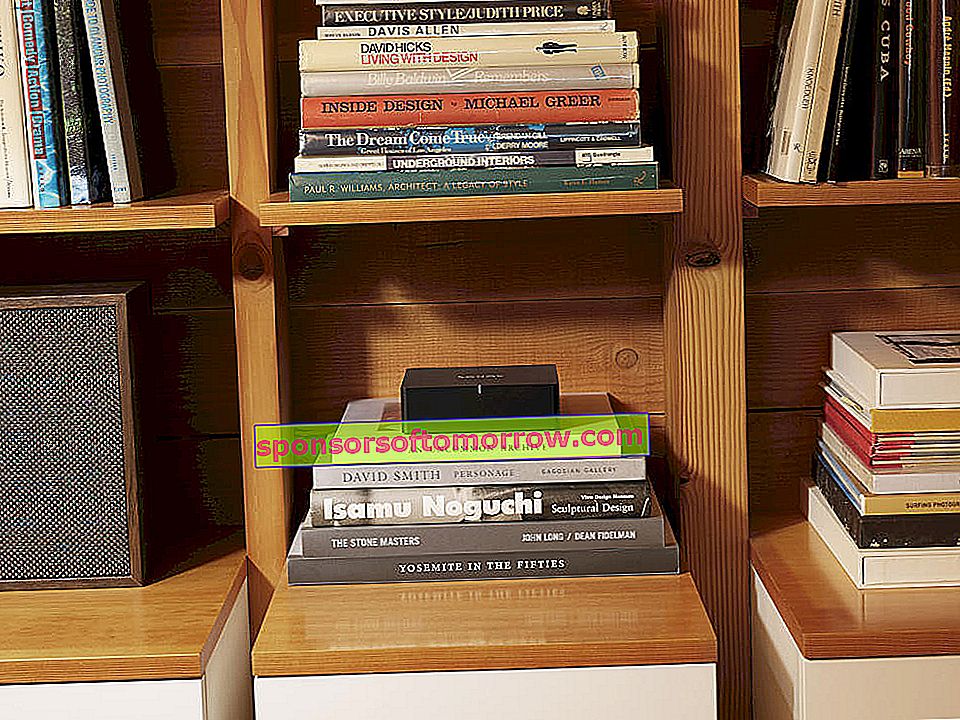
For the network, it has two Ethernet (well thought out, to be able to connect something else) and Wifi (802.11b / g). It also has a power input (it does not go directly to 220, it has an adapter) and an output to activate other devices. The latter is useful in case of hidden installation, so that it turns on (and then off) an amplifier for example.
As it has no control (touch or buttons) we need a mobile or tablet with the Sonos App , very complete and easy by the way. It also does not have in Port microphones to accept spoken commands (strange since the latest Sonos products carry it). So we can use Siri, Alexa, etc. ... only through mobile or another Sonos with it active.
Unbox and installation
When we tested the AMP we had a lot of work due to its different possibilities. The Port is a stereo source nothing more (and nothing less) but we took the opportunity to test it on different systems. First of all, upon receiving it, it was the sweet moment to unpack it . And we say sweet because Sonos products come exquisitely prepared, much like Apple. In this case, the packaging was simpler than usual, but even so, the cloth bag for the device itself was not lacking. So it comes to us flawless, and physically it is a device that is pleasant to the touch.
The installation is as simple than any other Sonos. The application will guide us to add a new device: we will plug it in, and everything happens as planned. It connects to our Wifi and if we have it with a network cable, even easier. Once "active" we can connect it to the sound equipment that we have planned. If we want to send music to the rest of the house (other Sonos) we will have to connect the amplifier's output (REC or TAPE REC) to the Port's input. To listen to the Sonos Port, go from it to the amplifier as one more source, either via analog (RCA right / left pair) or digital (coaxial, just one RCA). The Port, as its name suggests, will be our “port” of entry to 21st century digital music on any stereo ... Also the “port” to send music from that equipment to the rest of the house, for example from a record player.The only thing that is not available is the Trueplay setting, as we already saw in the Amp, a shame because it helps to improve the sound.
Dematerialized music ...
Accustomed to a classic sound system, a traditional hobbyist may find it strange to add a source to his system and ... that there is "nothing" to put on it. To date, the sources were accompanied by physical formats: vinyl, tapes, cassettes, compact discs, SACD, DVD, and so on. All we have here is an internet connection … but that's a lot: it's everything.
Sonos has made it easy and compatible with as many music services as possible. The list is endless, with more than forty services . Our favorites included, of course: Tidal, Spotify, Quobuz, Apple Music, even recently YouTube Music. The application we use the most since it offers music with lossless compression (FLAC) is Tidal. And also Spotify, whose lists are the best with an almost infinite disco. Tidal's menus are seamlessly integrated into the Sonos app: favorites are easily accessed, and you can choose favorites that the app saves. The same with Spotify : just register our user and the connection works from then on in a transparent way.
We must underline how good the Sonos control app is . We have tested many network players, and that is a key thing. In addition to the fact that some offer extra features or in some cases you can appreciate a more refined sound, that its application does not "give war", it is a blessing. The Sonos work perfect with your App but also allow you to use some other universals also without crashes, delays or other problems. We can quickly listen to any Internet radio, with a good selection of our own. It's easy to connect to and browse our shared home library.
Audition
Taking advantage of the compact size of the Sonos Port, we tested it on our own systems but also on someone else outside the home. As family teams, three: the most capable (treated basement and large speakers), the domestic (living room without excessive treatment and compact boxes) and the office (monitors and headphones). Outside, we took advantage of an audition on another team to see how it performed on Sonos and also let more people see and hear it.
The Port is a Sonos something special: the other products, almost all speakers except the Amp, are their own source of sound. This is inserted into an existing system and therefore the sound "we already have it" and what we add is a source (very versatile). In addition to its facilities, already mentioned, we will need its sound not to be left behind with respect to the equipment. And he did not do it in any case, really. In some cases we test your digital output to take advantage of a higher quality DAC converter. The Sonos Port was not left behind in that case either.
In equipment whose components added up to two zeros more than the price of the Port, it did not clash as a digital source. With the big Legacy Audio Signature cabinets and both tube and solid-state amplification, the most extreme case, the little Sonos offered music without complexes. And with the advantage of selecting on the mobile what we wanted to listen to next ... perfect. In the intermediate equipment, which is also an average price per component much higher than that of the Port, it held up perfectly against another specialized network player that was five times its price. And the same in the office, where he also listened to it with headphones (with a dedicated amplifier) did not give bad surprises in the form of noise. Our conclusion is that you need a very high-flying system, and face it with a network player that multiplies the price of the Port several times, to appreciate how to improve the Sonos: very good.
More extras
The Port is used to open any stereo to the universe of digital music. But it is a two-way door : it also serves to receive music from that equipment. And share it with the rest of the house through the Sonos network. The most obvious application will possibly be the one that the brand uses in its catalogs: connecting a turntable to listen to vinyl. To do this, the Port must be connected to the amplifier to which the turntable is also connected, since the “phono” pre-amplification is required. We did it and it works, of course. In addition, the sound arrives perfectly, with that warm touch of vinyl . Curious, because that "analog sound" has been converted to digital in the Port, it has been sent over the network, and it has gone from digital to analog in the other Sonos (an Amp in our case) ...
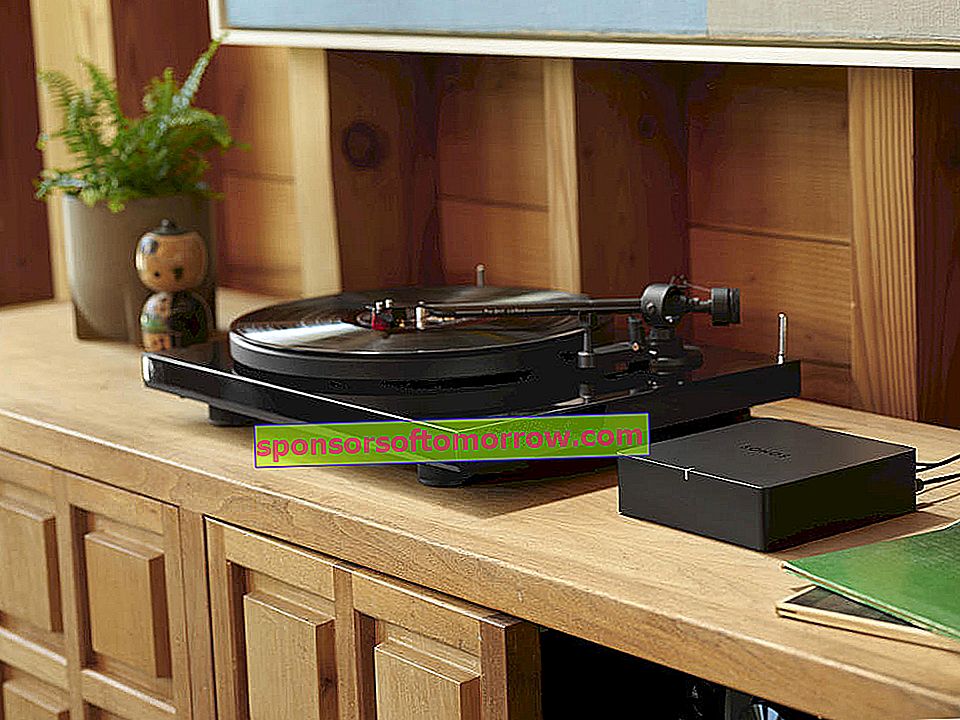
Sonos Port as a "station" for a record player
But we do not see too great an interest in it: someone has to be aware of the vinyl that lasts approximately 20 minutes ... We had to run down stairs more than once. Yes, another experiment was interesting : connecting a tuner. Yes, a quality FM radio, which with a good antenna still offers good quality sound… and also analog. As most of the stations are also on the Internet, it was not difficult to compare some live broadcasts between analog FM (via Port, digitized) versus “streaming”. Apart from the slight time lag, the analog sounded a lot better! We understand that in digital they use a lot of compression and that is why the received sound is worse ... but there we have an unexpected application of the Port. Listen to the radio of a lifetime, on Sonos speakers, with better quality.
Conclusions
After having tested the AMP we knew that the Port, after all a simplified version and without internal amplification, we would like. It is installed without problems and is easy to handle , allowing us to listen to music from very different origins. The best: it really opens the doors to a new musical universe for any stereo. It also does it without complexes, something that we have been able to verify in different systems and comparisons. We miss some other connection (direct headphones, optical digital), also the touch controls of other Sonos. But it is competitively priced in the HiFi market and offers unusual options, such as being able to share music from the computer to other rooms. Another good device from Sonos, highly recommended.
Sonos port
| Type | Network player | |
| Feeding | External adapter with universal AC input | |
| Tickets | 1 RCA analog stereo, 2 Ethernet (with loop-out). | |
| Departures | 1 stereo analog RCA, 1 digital coaxial RCA-SPDIF | |
| Trigger | 1 output (12V) to activate other devices | |
| Controls | None direct (Sonos App or compatible) | |
| Remote control | None | |
| Net | WiFi 802.11 b / g / n, Ethernet | |
| accessories | Stereo RCA Cables | |
| Compatibility | AirPlay 2, Spotify, Tidal, Tune-in ... (virtually all online services) | |
| Colors | Satin black | |
| Dimensions | 138 x 138 x 41 mm | |
| Weight | 472 grams | |
| Release date | Available | |
| Price | 450 euros |